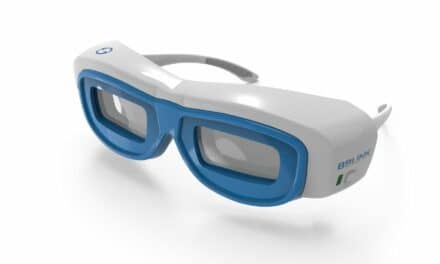A PR expert shares tips for attracting media attention

This exposure in the national media didn’t happen by accident. Katie Couric did not simply call your colleague out of the blue. Most likely, he used public relations (PR) to get the media to notice him.
PR is an effective vehicle for setting you apart from your competitors and helping convince the public that you are the market leader in your industry. Traditional advertising is not working like it used to, because the public is weary of being bombarded with commercials. PR overcomes viewers’ skepticism of paid promotions.
And it’s free! Or, is it? Today’s savvy plastic surgeons who have turned to their media-professional counterparts to help them attract media exposure likely paid dearly for it. The cost to use a PR agency’s contacts to represent you is $2,000 to $10,000 per month. It’s often a 12-month contract with no guarantees.
Therefore, before you invest your entire marketing budget into PR efforts, ask yourself the following questions:
• What are you trying to accomplish?
• Do you want to attract new patients from across the country?
• Do you want to be a celebrity physician?
• Do you want to grow your credibility with your current patient base?
• How much are you willing to spend to get your name in lights?
Also, ask yourself how important it is that you be featured on national television or in print. If your objective is to grow your patient base, why not go local? You have a much better chance of getting coverage; and the viewers, readers, and listeners are more apt to actually call your office.
Do-It-Yourself PR Strategies
Be your own PR agency! It takes effort on your part, as well as time, patience, and creativity, but it can really pay off. Here are some basics to get you started.
Pitch ideas with hooks. Self-promotion is not about you or your services, but whether your story will interest the media’s readers or viewers. Period. Therefore, be sure to always address the media’s interests (not yours) when pitching story lines.
Offer a free booklet, report, or other literature on a certain treatment or procedure. The media love to offer them, and the viewers love receiving them—and you can collect names and addresses of prospective new patients.
Introduce a new product or service that is a solution to a common problem. Many magazines have special sections that feature new products or services.
Tie your service to a current trend, fad, or news issue. The point is to piggyback on that coverage. For example, summer is coming; so leg veins, sun protection, and hair removal are à propos.
Develop a media-contact list. Media relationships are essential. The players work with those they trust to give them the stories they want, when they want them. You don’t need contacts if you have a fabulous story, but it does make life easier.
Build your media-contact list by visiting the Web sites of each local newspaper, magazine, television station, and radio station to look up the beauty and health editor, the station manager, the assignment-desk manager, and the producer. Do the same for trade journals in your industry or specialty. The longer your contact list is, the greater are your chances of getting your story to the right people. Pitch ideas often.
And follow up! It’s essential that you follow up with each contact several times so they get to know your name and feel comfortable with you. Remember, your press release is competing with hundreds, even thousands, of others—so it’s imperative that you toot your own horn and push for some media time.
Become the local “go-to” physician. Send a press kit that includes your photo, résumé, previous media coverage, white papers, topics you know well, articles you’ve written, and practice brochure to each media contact so they will consider you as a resource when they need someone to offer advice on certain medical topics.
Be available to the press. You are on their time now. They work with tight deadlines, so if you are not available, they will move on to someone else. You want to make a good impression, so if you are uncomfortable in front of the camera, then practice, get some help, or stick to print.
Network. Talk to your patients. You may find out that one of them—or a family member, neighbor, or significant other—is a member of the media. Be sure you keep your patients updated on any new services or procedures you offer. If you do, they may approach you on their own. Be sure to attend local, highly publicized events, such as fund-raisers—especially those that may attract media attention.
Write for the Internet. Write interesting articles, and post them on the Internet on such Web sites as www.ezinearticles.com or www.searchwarp.com. You can then reprint them and hand them out to your patients. If someone were to “Google” you, that article would appear in the search results.
Bribe. If all else fails, offer the media free procedures or meals. Invite them to your events and lectures. You never know.
Take Advantage of It
Once you are featured in the media, allow this exposure to grow legs. For example, if you are profiled in print, use the article to attract additional exposure and credibility to your Web site, display it in your reception area, or include it in your patient-information packets. Also, mention this exposure in your newsletter.
Remember, if you don’t like what’s in the news, go out and make your own.
Good luck! PSP
Catherine Maley, MBA, is the president of San Francisco-based Cosmetic Image Marketing, a public-relations, advertising, and marketing firm that specializes in helping aesthetic practices grow. She can be reached at (415) 377-8700 or [email protected].



